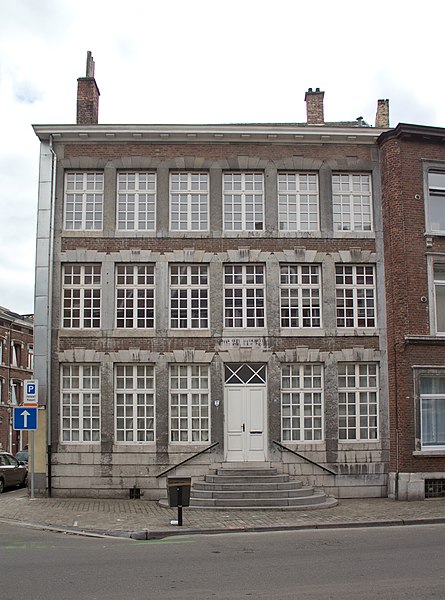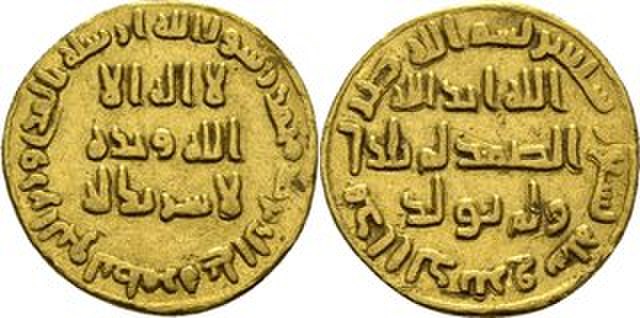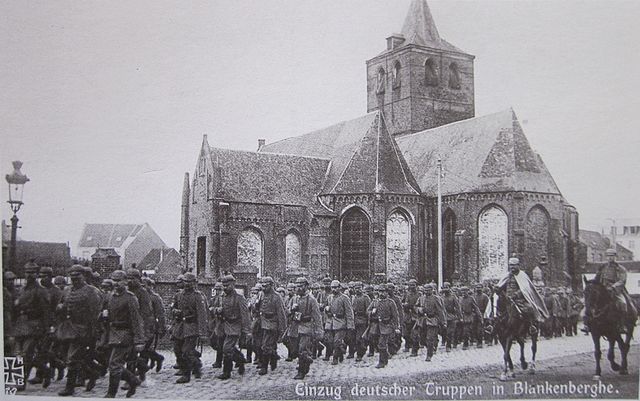Henri Pirenne was a Belgian historian. A medievalist of Walloon descent, he wrote a multivolume history of Belgium in French and became a prominent public intellectual. Pirenne made a lasting contribution to the study of cities that was a controversial interpretation of the end of Roman civilization and the rebirth of medieval urban culture. He also became prominent in the nonviolent resistance to the Germans who occupied Belgium in World War I.
The Maison Vivroux in Verviers where Pirenne was born in 1862
Pirenne (centre) pictured during a visit to the White House in Washington DC in 1922
View of the city of Antwerp (c. 1540)
7th-century gold dinar of Abd al-Malik ibn Marwan
German occupation of Belgium during World War I
The German occupation of Belgium of World War I was a military occupation of Belgium by the forces of the German Empire between 1914 and 1918. Beginning in August 1914 with the invasion of neutral Belgium, the country was almost completely overrun by German troops before the winter of the same year as the Allied forces withdrew westwards. The Belgian government went into exile, while King Albert I and the Belgian Army continued to fight on a section of the Western Front. Under the German military, Belgium was divided into three separate administrative zones. The majority of the country fell within the General Government, a formal occupation administration ruled by a German general, while the others, closer to the front line, came under more repressive direct military rule.
German troops marching through the Belgian capital, Brussels, in 1914
German troops marching through Blankenberge in 1914
War damage in Flanders in 1914
A German postage stamp, overprinted with the word "Belgium", for use under the occupation








